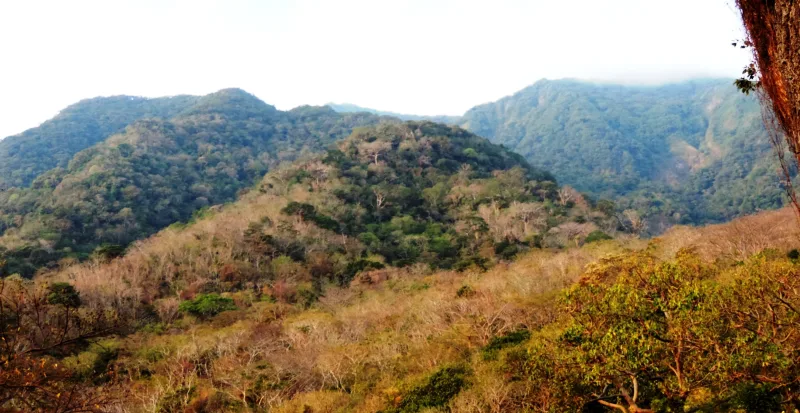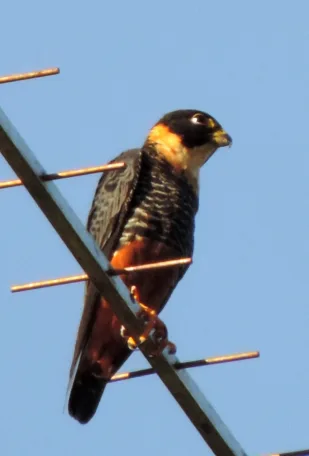
By: Christian Kiffner, PhD
New Avifauna Records of Ometepe Island
Located in Lake Nicaragua, Ometepe Island is formed by two adjacent volcanoes joined by a narrow isthmus. Despite its relatively small size of 276km2, the island encompasses a great variety of habitats including wetlands, dry forest, premontane transitional forest, and cloud forest. These landscape features allow the existence of many species of mammals, reptiles, and birds. Very likely, the diversity of animal species was higher before the major man-made land conversions on the island. The largest forest area is found in Maderas volcano, with an altitudinal gradient of habitats ranging from 33 to 1394 meters above sea level. The lower dry forest habitats have been reduced or fragmented due to agricultural practices, whereas the cloud forest in the top remains more continuous and conserved.

Dry forest, transitional forest and cloud forest of Maderas Volcano (Photo: E. Arévalo)
The bird species turnover within this gradient is high, particularly within the narrow habitat belts. Typically, one can find the Black-headed Trogon (Trogon melanocephalus) and the Banded Wren (Thryophilus pleurostictus) in dry forest habitats, and the Tropical Parula (Parula pitiayumi) and the Purple-throated Mountain-gem (Lampornis calolaemus) in cloud forest habitats. The avifauna is the richest of all vertebrate groups in the Island. According to the checklist of birds of Ometepe by Morales et al. (2007) there are 148 species; this represents 21% of all bird species in the country.
Since 2007, I have visited the Island twice a year with SFS students and staff members to carry out field exercises and lectures. Over these years I have recorded eight species of birds that are not documented in Morales et al. (2007). As the authors of this checklist state: “there remain areas of Ometepe Island that have yet to be surveyed,” so more species should be expected. The new records I report here are: American Coot (Fulica americana), Bat Falcon (Falco rufigularis), Common Gallinule (Gallinula chloropus), Gray-headed Yellow-throat (Geothlypis poliocephala), Least Grebe (Tachybaptus dominicus), Lesser Scaup (Aythya affinis), Mangrove Cuckoo (Coccyzus minor), and Northern Shoveler (Anas clypeata). These species were seen in the Charco Verde forest and wetland reserve and in a temporary swap in Merida.
It is important to continue surveying all habitat remnants to account for all the species present in the Island for future monitoring and conservation of the Ometepe Biosphere Reserve.

Bat Falcon, Hotel Charco Verde, Ometepe (Photo: E. Arévalo)
Related Posts


Alumni Reflections: Stories of the Return to Kenya
